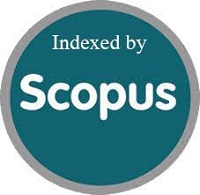Pengembangan Skala Pengukuran Perilaku Pro Lingkungan: General Ecological Behavior (GEB) Scale
DOI:
https://doi.org/10.15408/jp3i.v5i2.10791Keywords:
Validitas konstruk, perilaku pro lingkungan, CFA, uji paralelAbstract
Environment is one of the aspects that influence a person’s behavior. Clean environment will have a positive impact for the individual, and vice versa. At the present, the environment has been getting worse, and therefore needed a solution to these problems. The problem that occurs is the result of human behavior, therefore the solution was changing the responsible behavior that called pro environmental behavior. There are currently no measuring instrument standard both in Indonesia and beyond to measure the pro environmental behavior, therefore the purpose of this study was to develop a tools of measuring the pro environmental behavior by adapting and modifying the General Ecological Behavior Scale (GEB) from Kaiser (1998). The subjects in this study as many as 214 people. The analysis method used is confirmatory factor analysis (CFA) with M-Plus7 program. Testing the validity of the scale in this study conducted with three models of analysis is first order, second order and each of dimension. Furthermore, the researcher also conducted a parallel test to each dimension. Keywords: Construct validity, pro environmental behavior, CFA, parallel test.
Lingkungan merupakan salah satu aspek yang turut mempengaruhi perilaku seseorang. Lingkungan yang bersih akan berdampak positif bagi setiap individu, begitupun sebaliknya. Saat ini keadaan lingkungan sudah semakin buruk, oleh sebab itu dibutuhkan solusi atas permasalahan tersebut. Permasalahan yang terjadi adalah akibat dari perilaku manusia, untuk itu solusinya pun adalah dari perilaku manusia yang disebut sebagai perilaku pro lingkungan. Saat ini belum terdapat alat ukur baku baik di Indonesia maupun di luar untuk mengukur perilaku pro lingkungan, oleh sebab itu tujuan dari penelitian ini adalah untuk mengembangkan alat ukur perilaku pro lingkungan dengan mengadaptasi serta memodifikasi General Ecological Behavior Scale (GEB) dari Kaiser (1998). Subyek dalam penelitian ini sebanyak 214 orang. Metode Analisis yang digunakan adalah confirmatory factor analysis (CFA) dengan program M-Plus7. Pengujian validitas skala pada penelitian ini dilakukan dengan tiga model analisis yaitu first order, dan second order dan analisis per-dimensi. Selain itu peneliti juga melakukan uji paralel pada setiap dimensinya.
References
Bator, R.J., Bryan, A.D., Schultz, P.W. (2011). Who give a hoot?: Intercept surveys of litterers and disposers. Environment and Behavior. 43 (3), 295-315.
De Groot, J.I.M., & Steg, L. (2009). Mean or green: Which value can promote stable environmental behavior?. Conservation Letters 2, 61-66.
Hirsh, J. B. (2010). Personality and environmental concern. Journal of Environmental Psychology, 30, 245-248.
Kompasiana. (2015). Urbanisasi permasalahan serius kota-kota besar di Indonesia. http://www.kompasiana.com/ariakesuma/urbanisasi- permasalahan-serius-kotakota-besar-di
indonesia_55c35321f47e61b41f3f1e12 Diakses pada tanggal 22 Desember 2015
Kollmus, A., & Agyeman, J. (2002). Mind the gap: Why do people act environmentally and what are the barriers to pro-environmental behavior?. Environmental Education Research, Vol. 8, 3, 239-260.
Menhl. (2015). Rangkaian Hari Lingkungan Hidup Tahun 2015. http://www.menlh.go.id/rangkaian-hlh-2015-dialog-penanganan-sampah-plastik/ Diakses pada tanggal 22 Desember 2015.
Nordlund, A.M., & Garvill, J. (2002). Value structure behind proenvironmental behavior. Environment and Behavior, 740-756.Ojedokun, O., & Balogun, S.K. (2013). Self-Monitoring and responsible environmental behaviour: The mediating role of attitude towards littering. Frontiers in Psychological and Behavioral Science, Vol. 2, 31-38
Schultz, P.W., et.al. (2013). Littering in context: Personal and environmental predictors of littering behavior. Environment and Behavior 45 (1) 35-59.
Stern, P.C. (2000). Toward a coherent theory of environmentally significant behavior. Journal of Social Issues, Vol 56, 3, 407-424.
Umar, J. (2012). Peran pengukuran dalam penelitian psikologi. JP3I. Vol. II, No.2.
Voa. (2012). http://www.voaindonesia.com, diakses pada tanggal 18 Desember 2014.



